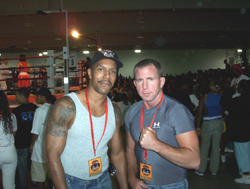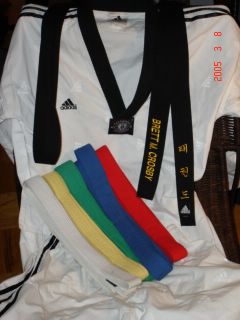
Tips for finding and working with a personal trainer: healthclub.com
Hiring a personal trainer should be a rewarding and productive experience, but retaining a trainer represents a commitment of both your time and money. To get the most from a trainer and your workouts, make sure that you enlist a personal trainer who has the experience and training necessary to help you achieve your personal fitness goals.
Consider the following as you search for the best personal trainer for you:
Personal trainers are increasingly more likely to hold a Bachelor's degree in exercise science or a related field and/or to be licensed physical therapists or athletic trainers.
Not all "certifications" are the same. Some require rigorous study of exercise physiology, while others may only require applicants to pass a very simple on-line quiz. You should feel free to ask for a trainer's credentials before committing to working with him or her.
Several nationally and internationally recognized certifying organizations have achieved accreditation of their personal training certifications from the National Commission for Certifying Agencies (NCCA). For a listing of these organizations, please visit: http://www.noca.org/ncca/accredorg.htm. Certifications that have recently become accredited may not be listed. For the most up to date listing, please contact NCCA at (202) 367-1165.
Always check with your doctor before starting a new exercise program, whether at a health club or at home. Inform your physician if you are changing or increasing the amount or intensity of your workouts and if you are interested in adding dietary supplements to your routine.
Ask friends and co-workers for recommendations of personal trainers and the reasons why they like a particular club or fitness professional.
A quality health club or gym is a great place to find and work with a personal trainer. Talk to fitness directors at local health clubs to find a qualified trainer that meets your individual fitness needs.
Meet with prospective trainers first to find out how they would work with you and what kind of programs they might recommend to achieve your personal goals.
Keep in mind that a personal training certification does not qualify a trainer as a nutrition counselor/dietician, physical therapist, or other specialized healthcare provider. A good trainer should not recommend specific supplements, medicines, or curative practices for illnesses, injuries, or health conditions unless they have the appropriate credentials.
Trust your instincts. If you don't believe a trainer will motivate you, that person is probably not right for you.
Make sure a trainer has the experience necessary to work with you safely and effectively. Just because a trainer is accomplished at helping clients prepare for marathons, they may not be the right person for someone just getting back into a fitness routine.
Tell your trainer about your level of experience, current level of activity, fitness goals, and all medical conditions or dietary requirements. Be sure to share all relevant information about your health and physical condition necessary to develop a fitness program that is appropriate for you.
If you have existing injuries or a chronic health condition, make sure that your trainer works with your doctor to develop a program that is appropriate, effective, and safe. Your personal trainer should ask you to complete a health history questionnaire to help identify any existing medical conditions.
Take your time and research all the potential trainer options thoroughly to maximize the investment you make in both time and money.
National Commission For Certifying Agencies:
Accredited Certification Organizations/Programs as of October 30, 2006
Organization/Program and Expiration Date
Certified Personal Trainer 4/30/2011
American Council on Exercise
Clinical Exercise Specialist 8/31/08
Group Fitness Instructor 8/31/08
Lifestyle and Weight Management Consultant 8/31/08
Personal Trainer 8/31/08
National Academy of Sports Medicine
Certified Personal Trainer 11/30/10
National Athletic Trainer's Association Board of Certification
Entry-Level Athletic Trainer Certification 10/31/10
National Council on Strength and Fitness
National Certified Personal Trainer 4/30/10
National Federation of Professional Trainers
Certified Personal Fitness Trainer 11/30/10
National Strength and Conditioning Association (NSCA) Certification Commission
Certified Personal Trainer 4/30/08
Certified Strength and Conditioning Specialist 4/30/08



























